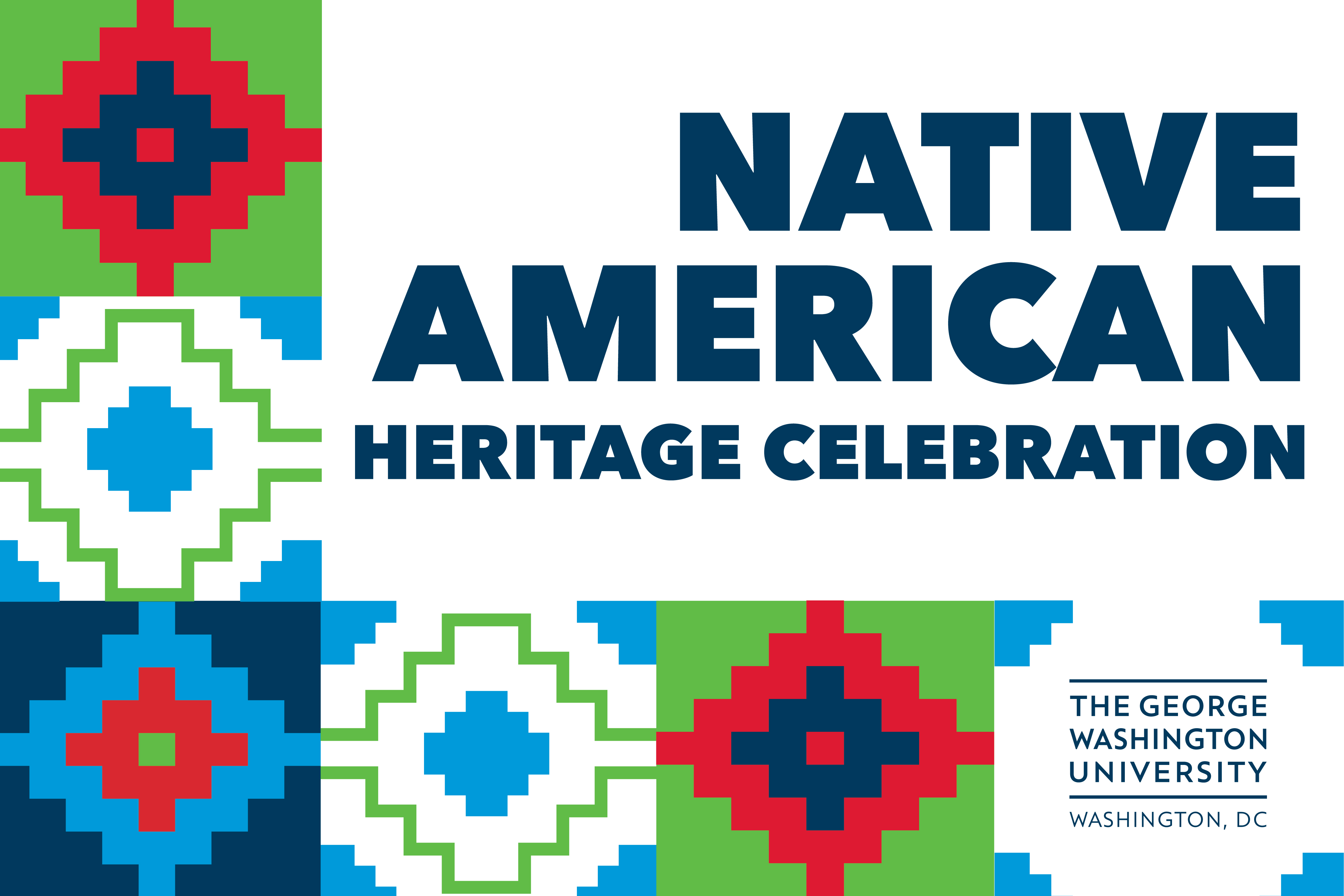November is Native American Heritage Month, an opportunity to highlight and uplift the voices, stories and cultures of Indigenous people throughout the United States. At the George Washington University, Students for Indigenous and Native American Rights (SINAR) are leading an ongoing series of events, including a performance last weekend by dancers and drummers representing the Rappahannock Tribe of Virginia.
GW Today spoke to SINAR co-vice president Noah Edelman, a sophomore journalism major, about the urgency of making visible the living presence of Indigenous cultures and centering Indigenous voices beyond one month a year.
Q: How did you get involved with SINAR?
A: My family's from Santa Clara Pueblo in New Mexico. I grew up in Colorado, but that’s where our Native lands are. When I came to GW, I wanted to be around other Natives—kind of to educate the community, but also to foster a space where I could have that community and be proud and relaxed. Like a lot of affinity groups, it can just be a relief to be around people who understand you, who are like you in that way. As I did more research, it came to my attention that we have a very small population of Native students here at GW. So that made it even more important for me to commit to this group and make it stronger.
Q: What does celebrating Native American heritage mean to you, this month and beyond?
A: Part of it is about visibility. A lot of Native history and Native identities are invisible; there’s a lack of representation in most facets of public life, media, education, the workforce. So one of the meanings of this heritage month is just about, you know, that we’re still here!
Our programming assignment for the month was around education, because I know a lot of kids here at GW haven’t had any exposure to or interactions with Native kids. So our idea is to give them that exposure, even in surface-level form. If you’re Native, this month is also about pride, about educating yourself and understanding your story. If we can combine both of those initiatives, I think we’re doing a good job.
Q: Like bringing the Rappahannock dancers to campus—does that help people understand that these are living cultures and people, that they are right here?
A: Yeah, that's an important part too—there’s Natives everywhere! It’s not like we’ve all been shoved out to Oklahoma, or we’re all on the Plains. Even in cities, there are urban Natives too. It’s a big story, and it's hard to generalize, because there are 500-plus tribes and all kinds of people.
Q: Do you think people have a monolithic view of Indigenous people in the United States?
A: I think the way Native history is taught can be monolithic, but it needs to start there sometimes. You can't get into the nuances of Native life if you don't understand that it exists in the first place. Then you can start to understand the differences and disparities—that there are rich tribes and poor tribes, that there are geographic differences, political differences and religious differences. But it’s hard to impart all that knowledge at once.
Q: Why do you think it’s important to celebrate Native American heritage right now?
A: I'm of the camp that it's always important. But certainly right now there's a lot of political tensions around the world that have to do with Indigenous people and their historic lands. I think that people are thinking about colonization right now, and it’s not necessarily about Native American issues but that’s one way into the conversation.
November as Native History Month is interesting, too, because of the role of Thanksgiving. For a lot of people that’s the one place where they see Natives in American history, the one blip in our history classes where Native people appear. And it’s a grossly mismanaged story. That history that we’ve turned into the story of Thanksgiving also involves genocide. Native people taught the pilgrims how to grow corn, how to survive in North America, and in return they got enslaved and killed and their land was stolen. It can be a bit of a buzzkill to talk truthfully about that, but I think in some contexts it’s important to be accurate. David Silverman, who is a professor of history here [in the Columbian College of Arts and Sciences], actually wrote a book about it, and we held a discussion with him this week that was really interesting.
Q: What would you like to share with others at GW about your own Native community and how that heritage informs your story here?
A: I think the Pueblo spirit is very strong. It’s all about community. It's about taking care of your family and your elders, it’s about loyalty, it’s about respect and love for the stories and traditions you come from. I think that if I can impart something to people, it would be those values. They’re very important to me.
As a journalism major, writing is what I feel I was put on this earth to do, and I like to think that my family and my ancestors walk with me on my journey and come through in my writing. Even doing kind of menial college tasks, just sitting in class or whatnot, I think: there's a reason I'm here. I worked hard to be in college, and I feel a lot of gratitude for opportunities that I have.
Q: Is there anything else you’d emphasize for the GW community this month?
A: I’d really recommend that people seek out Native-made media, because we do storytelling in a very different and intentional way. That’s where you get our real stories. Off the top of my head I can recommend the TV show “Reservation Dogs” and the poet laureate Joy Harjo, who is an amazing writer. But that’s just a starting point.



